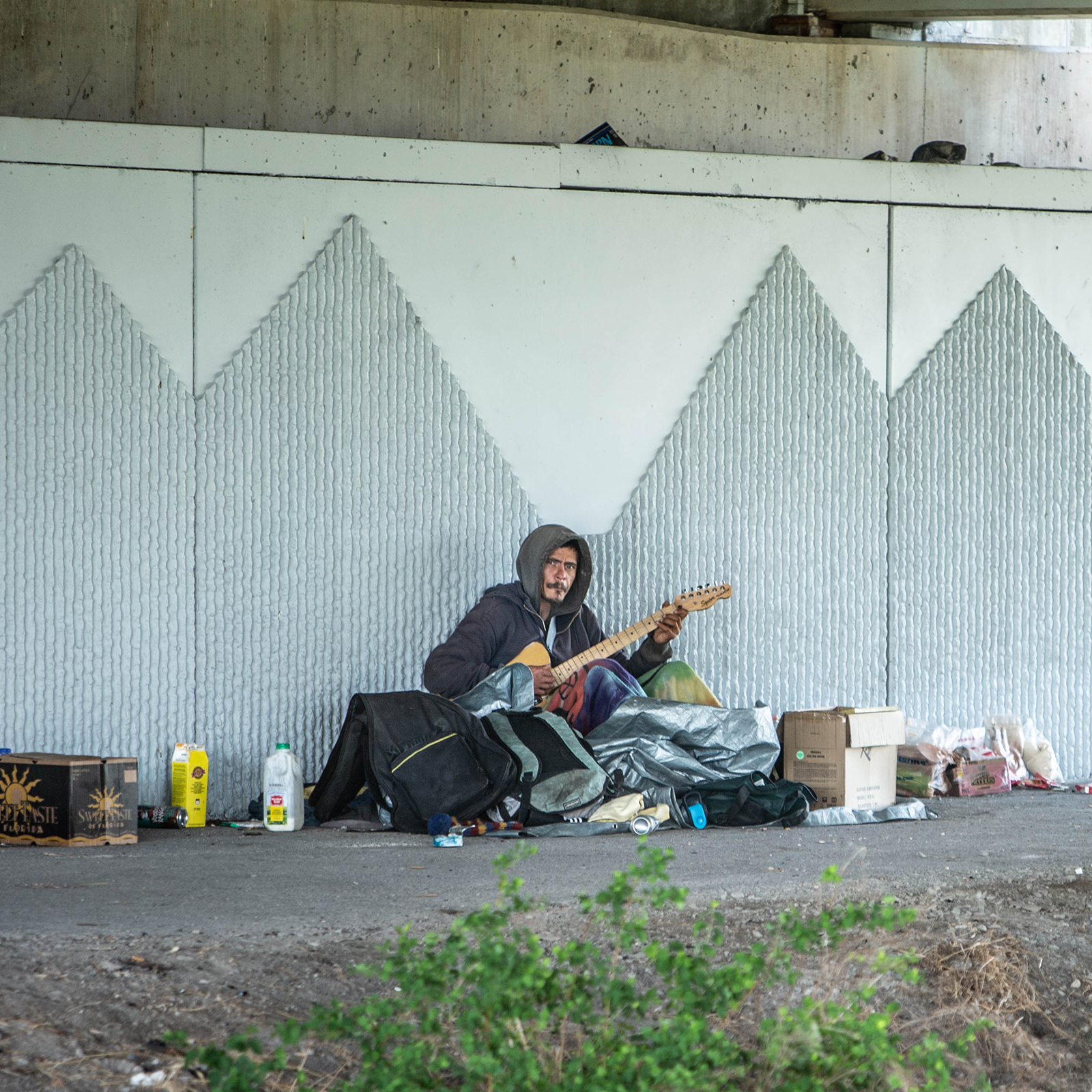
It’s easy to forget that the lump under the blanket at the Depot Park pavilion is a person. After all, we’ve been conditioned to accept that the easiest way to deal with the homeless is to turn a blind eye. Walk past. Don’t make eye contact or they might try to talk to you, as if that would be the worst thing in the world.
Amid vast public lands and beautiful mountain scenery, it’s convenient to think the Flathead would be exempt from issues such as homelessness. But with housing at maximum occupancy, the challenge of finding shelter, especially affordable shelter, is at an all-time high.
Statistics on homelessness in the Flathead are extremely difficult to track, especially following pandemic-related interruptions in data-collection, according to Chris Krager, director of the Samaritan House, the largest homeless shelter and transitional housing facility in northwest Montana.
However, those performing outreach notice certain trends. For example, Jody Waggener, director of operations for the Flathead Valley Warming Center, has noticed a spike in mental health and addiction-related homelessness over the last few years, as well as an increase in the number of women, children and elderly needing assistance. Of the nearly 300 residents who used Warming Center resources over the 2021-2022 winter, one in five were over the age of 55. A large chunk of the local homeless population are veterans. In fact, according to Krager, the Flathead has the highest percentage of homeless veterans of any area in Montana. Meanwhile, the Flathead’s affordable-housing crisis has triggered more and more families with children to seek shelter year-round.
Many of the Flathead’s homeless spend hours a day filling out applications for meager government assistance, applying for jobs and jumping through bureaucratic hoops. The reasons why people wind up with nowhere to go vary, but one thing is clear — the issue challenges every sector of the community, ranging from businesses to law enforcement to social services.
While city officials argue over how to manage the homeless and nonprofits scramble to find places to put them, the homeless fight to get by. They get creative, they study, they work, they seek answers, they help one another and they wait for their turn to start living instead of just surviving.
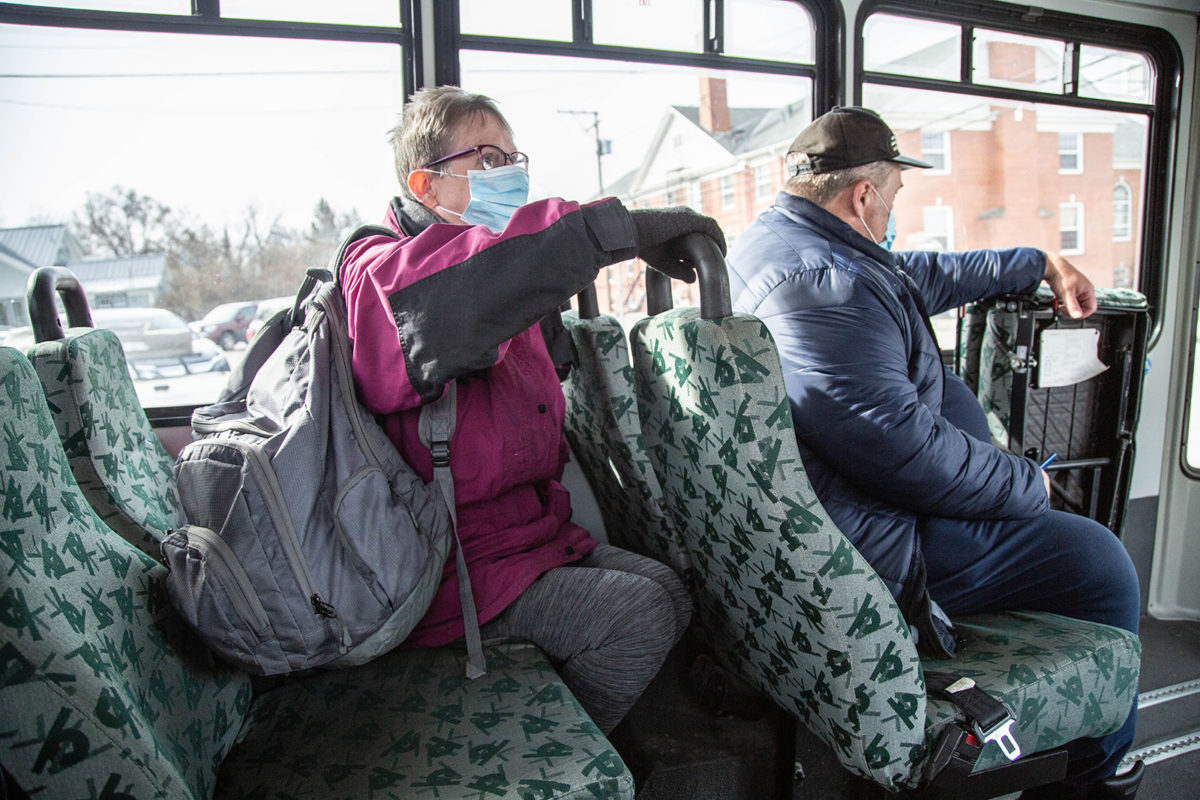
People with Backpacks
Light streams in from a large crescent-shaped window in a corner on the top floor of the Kalispell Public Library, warming a pair of squishy yellow armchairs. It’s a cozy, quiet place for Jean Hunter to rest her tired legs and let the next eight hours roll peacefully by while she waits for the Mountain Climber bus to bring her back to the Flathead Valley Warming Center in time for dinner.
“Homelessness is a waiting game,” said Hunter, 63.
Her feet ache from neuropathy from 50 years of alcoholism. As a life-long alcoholic, drinking is the first thing she thinks of when she wakes up.
For most of her life, she functioned with her alcoholism, holding high-paying jobs with travel perks, oftentimes quitting before she could get fired. But by 2021, her addiction finally drove her to homelessness and prompted her to seek out the Warming Center, a low-barrier homeless shelter in Kalispell.
“I just wanted to lay down and die. You just feel overwhelmed, not having money, not having a home,” she said.
The Warming Center is open from 6 p.m. to 10 a.m., October through April. It provides showers, food, beds, lockers and assistance for up to 40 residents on a nightly basis. Low-barrier means residents are not required to have IDs; they can come with pets, children and as couples. Even struggling addicts are welcome. Since expanding their facility in October 2021, they were full every night they were open last winter.
On a typical April morning, the facility bustles with new and old residents while staff lay out a spread of breakfast food donated by a local church group. Some longer-term residents jump up to do chores while new ones tentatively ask how the lockers work. A young woman rolls in on a longboard asking for breakfast. A one-eyed dog sits diligently by his owner’s side.
“It’s a wide variety of people,” Hunter said, wrapping up a sandwich for lunch while a kitten on a leash plays with the leg of a walker beneath her. “I’ve never been around people like this. I’ve always thought I was better than that.”
At 10 a.m., the bus collects the remaining Warming Center residents and delivers many of them to the public library. Sundays are the hardest day of the week because the library is closed.
Many of the usual library-goers go to Depot Park on Sundays and wait, exposed to the elements. Hunter sometimes saves up her money to make small purchases at the grocery store so she can wander around the heated building.
“Sometimes they watch you in the store like you’re going to steal something because I’m carrying a backpack,” she said. The contents of her backpack include a coat, a tablet, medications in a plastic bag and her lunch from the Warming Center.
On April 22, Hunter entered her final week of waiting at the library. Waggner helped Hunter apply for Medicare assistance to get into the Beehive Assisted Living Facility in Columbia Fall before the Warming Center closed for the season.
“I’m going to have a home soon,” Hunter said. “I hope I don’t blow it.”
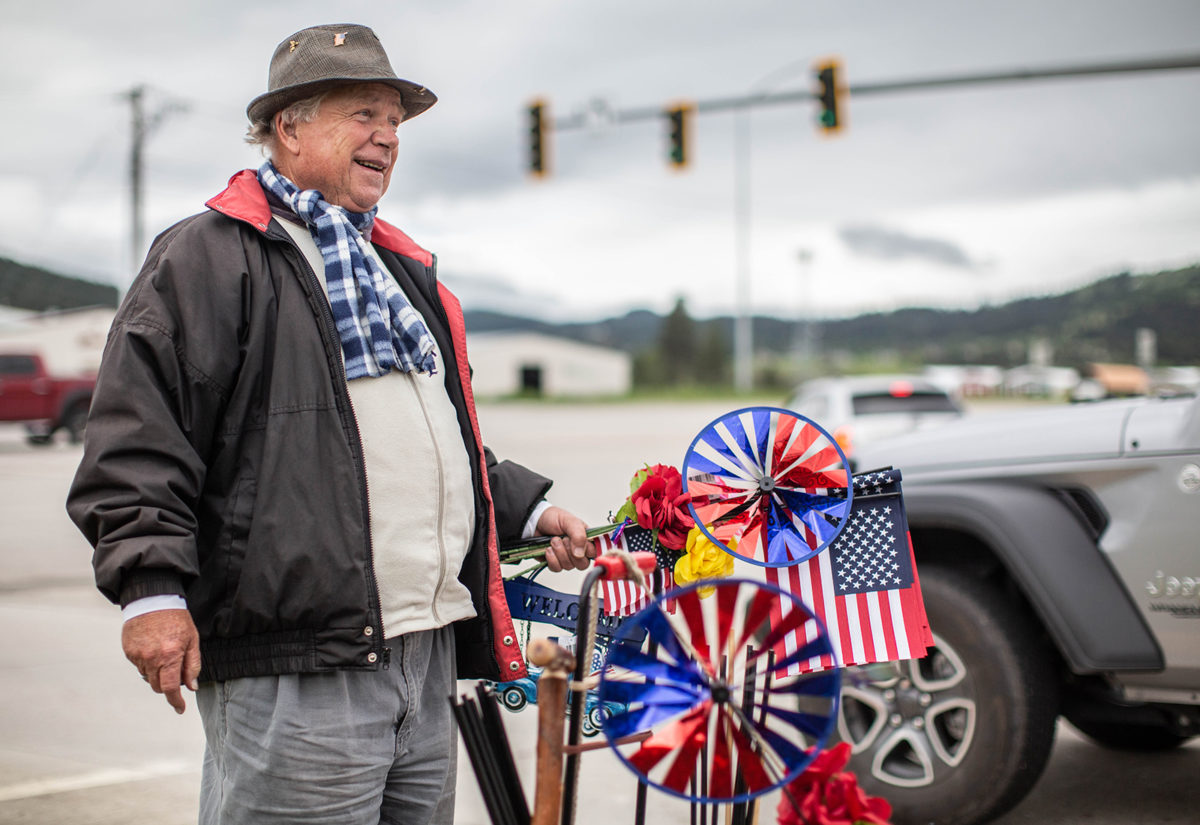
The American Peddler
A sun-bleached American flag waves from the antenna of the beige 1998 Buick where Al Wellenstein sleeps in the backseat. A Bible soaks up sun on the dashboard, nestled between a glasses case and a slightly squashed gray fedora. Wellenstein, 60, loves fedoras and ties. He has 30 or 40 of each in his storage unit. They make him feel professional and remind him of the 1920s.
Wellenstein takes his morning coffee with sunrise at Lawrence Park, before the throngs of children and disc golf arrive. He opens the Buick’s trunk and checks his inventory. Like every savvy business owner, he rotates his merchandise based on the seasons and market demands. On a warm spring morning, he boasts a surplus of hats, a few decorative door hangers, some pinwheels and a couple of umbrellas. In the fall, he’ll have more books for sale. At Christmas time, it’s teddy bears. But the flowers and the flags are a constant. His regulars always expect him to have those things.
For over eight years, Wellenstein, known to locals as the “Flag Man,” has been peddling merchandise to customers on the street. He started his business in 2014 at the Kalispell fourth of July parade. He bought some American flags online and brought them to the parade to sell.
“I made $148 in an hour. It’s not much money these days, but it is when you’re on the streets,” Wellenstein said. “I got hooked after that. I thought there might be something here. I was living on the streets pulling my cart around anyway.”
He started with small flags, pins and pencils. Then bigger flags and synthetic roses on Mother’s Day and Valentine’s Day. The flower sales doubled his income.
“Now I can’t sell the roses without the flags or the flags without the roses,” he said. He buys those wholesale online. The other stuff he finds at thrift stores or dollar stores or occasionally in a dumpster.
He’s been selling his products near the U.S. Highway 93 bypass for a few years now. It’s the fifth location he’s tried around Kalispell after other spots in town proved to be less fruitful.
On an average day, he starts in the morning and sells for up to four hours, waving to passersby, dressed neatly in a vest or tie, a fedora and his most comfortable dress shoes. Physical limitations prevent him from working more than a few hours a day. The “vending” job allows him to make his own schedule.
“I enjoy it. There are some times when people are mean and rude. I’ve had people flip me off and yell at me ‘get a job.’ People glare. I don’t understand. I’m a business out there selling flags and roses. I’m not out here begging.”
Wellenstein says the 20 percent of people who support his business make up for the 80 percent who are less than friendly. “A lot of people care about me. People thank me for what I do. Sometimes they leave me a big tip and they don’t want anything.”
When Wellenstein gets a little extra money, part of it goes to gas (a $60 tank equals 12 flags), some of it goes to a burger from Frugals or a Costco pizza, and with the rest, he purchases shoes, blankets and socks to distribute to other homeless people at the food bank.
“Socks are golden on the street,” Wellenstein said.
Wellenstien moved to Kalispell in 1990 from St. Augustine, Florida. Before that, he was “from everywhere.” His life’s adventures working in a traveling carnival, driving a taxi in California and pedaling across America are detailed in four memoirs, two of which have been published — “Life and Times of the Rich Hobo” and “Living the Dream.”
Wellenstein never much cared for paying rent or noisy roommates. But he likes taking his mom out to dinner, chatting with customers and the occasional hug. “Human contact makes you feel like you’re a human being and makes you feel loved,” he said. “That’s all any of us want.”
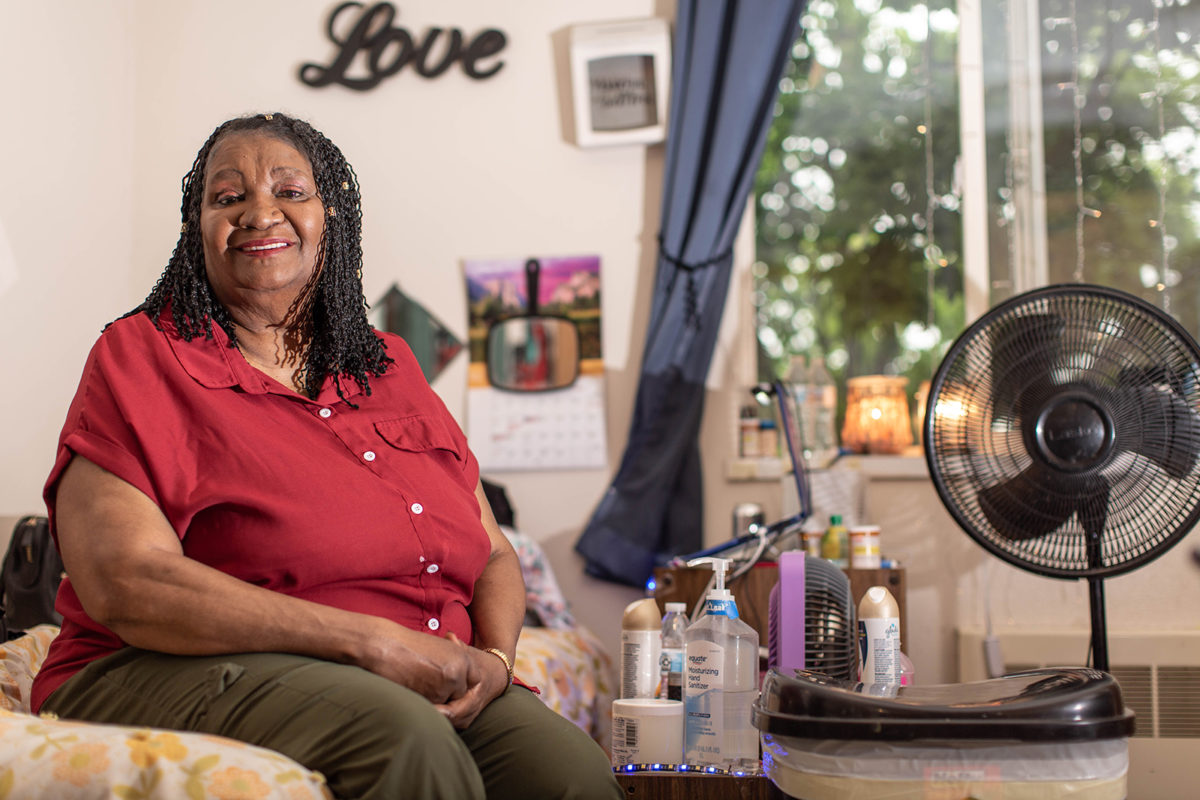
Finally Living
Everybody was scrambling.
In January 2022, a developer from California purchased an old Kalispell motel called FairBridge Inn and promptly evicted over 200 long-term residents. They had exactly 30 days to vacate their homes in a community where affordable housing is ranked the number one public crisis.
“I was packing and I didn’t know where I was going,” said Joan Corbin, a former resident of the hotel.
Joan Corbin and her daughter, Micaela, both disabled, had been living at FairBridge Inn for over two years when the eviction notice came. Joan, 65, has a condition which causes her to have mini-strokes on a regular basis, resulting in frequent hospitalization. Michaela, 23, is autistic. In a town where it’s common for a studio apartment to cost as much as $1,500 per month, the $800 motel room was all mother and daughter could afford on a social security budget.
At first, Joan had faith in government assistance. After all, she had a Section 8 voucher.
“Don’t worry, this is going to be easy,” she told her daughter.
But with more than 100 newly homeless residents racing for a few open spots, and some waiting upwards of two years for housing, Jane was at a disadvantage. Her reliance on public transportation made her slow to jump on scarce housing opportunities.
“I got on everybody’s waitlist,” she said.
Thirty sleepless nights and anxiety-filled days came and went.
“Life went on whether we were getting kicked out or not. We had doctor appointments to go to. We had to find people to help us pack and store our stuff,” Joan said.
“It was really stressful, I was pretty scared,” Michaela said.
Just 10 days before the Feb. 12 eviction date, the Samaritan House, a local homeless assistance shelter, offered their support to the soon-to-be evicted residents.
They offered food, shelter and an extension of their usual two-week stay limit. Out of options, the Corbins moved into a women’s dormitory at the Samaritan House which they shared with two other women.
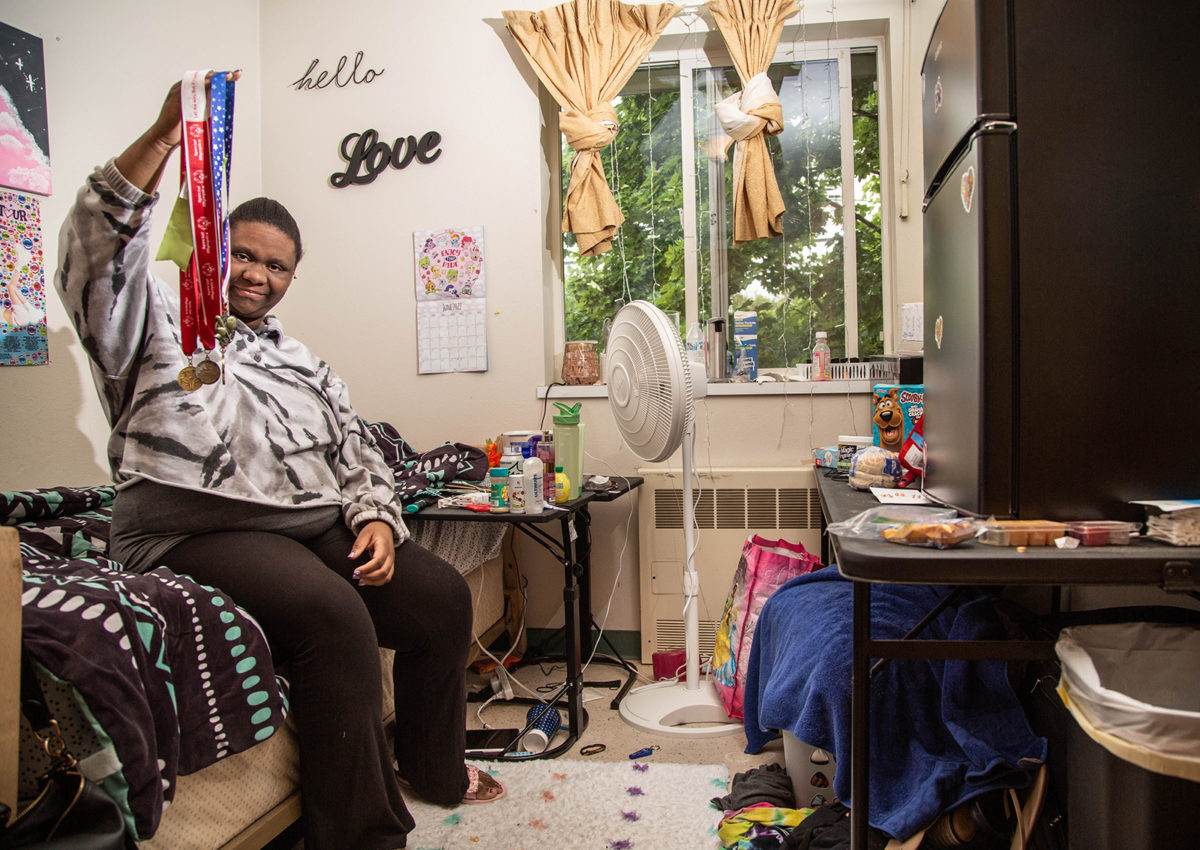
“We were both afraid because we’ve never been in a homeless shelter before. We didn’t know what to expect,” Joan said.
Roughly a dozen FairBridge Inn residents relied on the Samaritan House in the winter of 2022. Samaritan staff posted up extra beds in one of their administrative buildings to handle the overflow.
The Corbin’s dormitory solution was temporary. For the next seven weeks Joan scrambled to fill out all the appropriate paperwork for HUD housing. Her application was denied and two days before they were scheduled to move out of the dormitory, the Corbins once again found themselves packing without a destination.
The morning the Corbins were set to move out, the shelter manager, Sona Blue, knocked on their door and asked Joan and Michaela to get dressed. She escorted mother and daughter down the hall and showed them two tiny apartments side-by-side. Each one had a bed and two electric burners for cooking with one bathroom between them — their home for the next two years while they wait for under-construction subsidized housing to become available.
“It’s small but it’s ours for now,” said Joan, maneuvering around her walker to sit on the twin bed. Both women have decorated the tiny rooms with calendars, brightly colored bedspreads and the letters L-O-V-E hanging above their beds. Michaela proudly shows off her gold and silver Special Olympics medals.
To the Corbins, the rooms mean freedom. Freedom from curfews, freedom to cook their own food, watch what they want on TV and freedom to fill their own closet space with whatever they want. Instead of anxiety, they find their days filled with laughter.
“We’re settled in and we’re living,” Joan said. “We’re finally living.”
Jessie Mazur is a writer, photographer and business-owner from Whitefish. Her work can be found at www.picturemt.com.